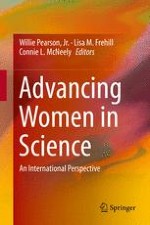2015 | OriginalPaper | Buchkapitel
6. Women in Mathematics: Change, Inertia, Stratification, Segregation
verfasst von : Cathy Kessel
Erschienen in: Advancing Women in Science
Aktivieren Sie unsere intelligente Suche, um passende Fachinhalte oder Patente zu finden.
Wählen Sie Textabschnitte aus um mit Künstlicher Intelligenz passenden Patente zu finden. powered by
Markieren Sie Textabschnitte, um KI-gestützt weitere passende Inhalte zu finden. powered by
